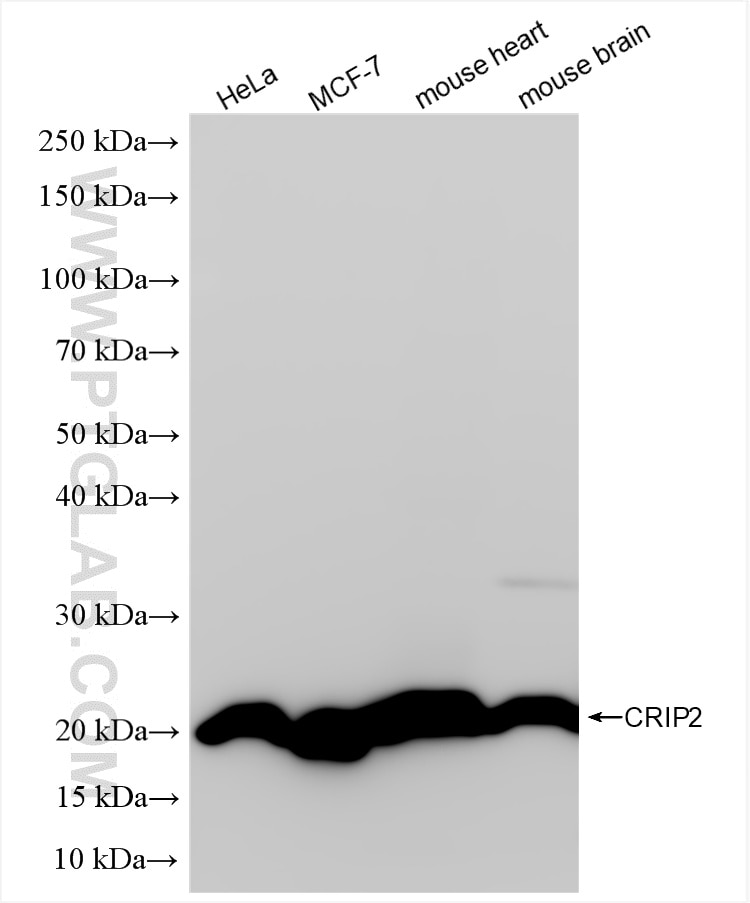Tested Applications
| Positive WB detected in | HeLa cells, MCF-7 cells, mouse heart tissue, mouse brain tissue |
Recommended dilution
| Application | Dilution |
|---|---|
| Western Blot (WB) | WB : 1:5000-1:50000 |
| It is recommended that this reagent should be titrated in each testing system to obtain optimal results. | |
| Sample-dependent, Check data in validation data gallery. | |
Product Information
85826-4-RR targets CRIP2 in WB, ELISA applications and shows reactivity with human, mouse samples.
| Tested Reactivity | human, mouse |
| Host / Isotype | Rabbit / IgG |
| Class | Recombinant |
| Type | Antibody |
| Immunogen |
CatNo: Ag6515 Product name: Recombinant human CRIP2 protein Source: e coli.-derived, PGEX-4T Tag: GST Domain: 1-208 aa of BC000434 Sequence: MASKCPKCDKTVYFAEKVSSLGKDWHKFCLKCERCSKTLTPGGHAEHDGKPFCHKPCYATLFGPKGVNIGGAGSYIYEKPLAEGPQVTGPIEVPAARAEERKASGPPKGPSRASSVTTFTGEPNTCPRCSKKVYFAEKVTSLGKDWHRPCLRCERCGKTLTPGGHAEHDGQPYCHKPCYGILFGPKGVNTGAVGSYIYDRDPEGKVQP Predict reactive species |
| Full Name | cysteine-rich protein 2 |
| Calculated Molecular Weight | 22 kDa |
| Observed Molecular Weight | 22 kDa |
| GenBank Accession Number | BC000434 |
| Gene Symbol | CRIP2 |
| Gene ID (NCBI) | 1397 |
| Conjugate | Unconjugated |
| Form | Liquid |
| Purification Method | Protein A purification |
| UNIPROT ID | P52943 |
| Storage Buffer | PBS with 0.02% sodium azide and 50% glycerol, pH 7.3. |
| Storage Conditions | Store at -20°C. Stable for one year after shipment. Aliquoting is unnecessary for -20oC storage. 20ul sizes contain 0.1% BSA. |
Background Information
CRIP2, also known as CRP2 and ESP1, belongs to the cysteine-rich intestinal protein family (CRIP family). The CRIP family is a subfamily of the highly conserved Lin-1, Isl1, Mec3/double zinc finger protein family that exhibits diverse biological functions. CRIP2 is a cardiac vascular marker, and its expression is detected in cardiac endothelial cells during development and in the adult heart(PMID: 40118853).
Protocols
| Product Specific Protocols | |
|---|---|
| WB protocol for CRIP2 antibody 85826-4-RR | Download protocol |
| Standard Protocols | |
|---|---|
| Click here to view our Standard Protocols |




